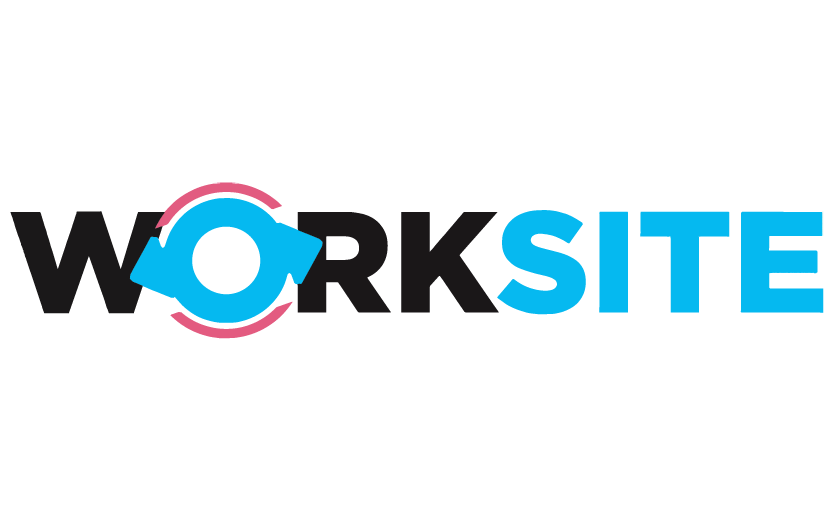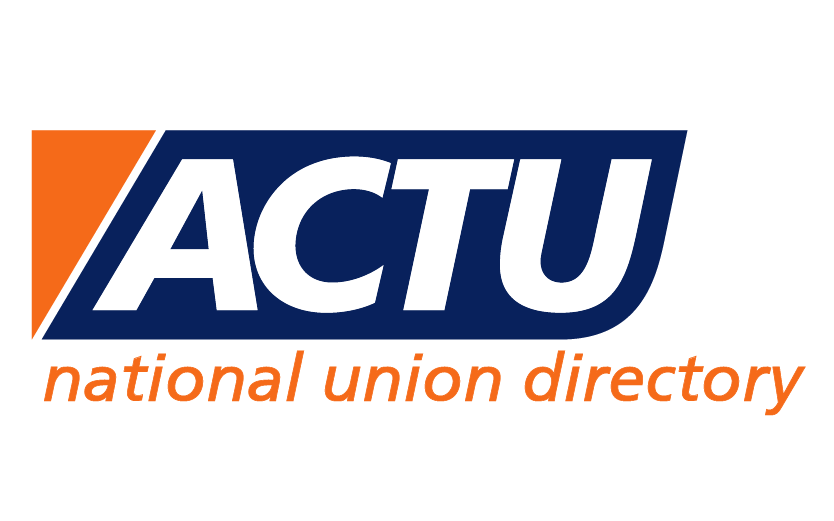Physical barriers, attitudinal barriers, social barriers and psychological barriers all stand between workers with a disability and full workplace participation says ACTU President Sharan Burrow.
It is an honour to open our first national conference on Workers with a Disability. The ACTU sees this conference as a turning point in regards to better understanding the needs of workers with a disability. It is a great opportunity to enter into discussions with advocacy groups, union leaders, government and welfare authorities as well as all those workers with a disability to see what we can all do to improve conditions and attitudes within the workforce.
The ACTU and its affiliates are hoping that the conference can define the issues which are of concern to workers with a disability. This will allow us to provide practical assistance in areas such as providing better opportunities for training and skills development, ensuring that wages are fair and working conditions are reasonable, examining occupational health and safety issues, and also understanding more clearly the barriers that make participation in paid work more difficult.
At the conclusion of the conference the ACTU and affiliated unions are hoping to achieve a better understanding of these issues. We need to establish practical assistance which can provide a renewed commitment from us to work together to provide help where it is most needed by workers with a disability.
The Neglected Sector
There are 3.6 million people with a disability in Australia who fall under the World Health Organisation’s definition of what constitutes a disability.
in general employment
for work
to work or have given up looking for work
Workers with a disability are entitled to scream that they constitute a neglected sector. Constituting 10% of the workforce, workers with a disability are substantial group and one whose needs must be accommodated. Workers with a disability have had to struggle more than most to be heard. Discrimination from employers and other employees is rife and at odds with the principles of workplace rights we uphold. These working Australians have had to deal with abuse, neglect and being deprived of their entitlements. They have all too often been given marginal jobs far below their capacity where they have no security and no opportunities for training or advancement
The following case studies from Jobswatch give us just a taste of the reality for too many of you:
Sheridan
Sheridan worked as a receptionist. She was asked to do some dictaphone work. Sheridan told her employer that she could not do that work because she had a hearing problem. Since she told her employer about her hearing problem people have refused to speak to her and have been making bogus calls to her.
Andrew
Andrew worked as a data entry operator. He got a severe migraine at work and had to lie down at work and was told to go home. When Andrew got home he went to the Doctor. Andrew spoke to his employer after he got back from the doctor and was promptly sacked. Andrew’s doctor rang Andrew’s employer to verify that he was ill. Andrew’s employer did not believe the Doctor.
David
David worked as a driver. He was off work for one month due to an injury at work. David and his partner kept his employer up to date about his condition. David dropped off his medical certificate and rang his employer when he was given the all clear to come back to work. David was dismissed by his employer.
Ross
Ross who has a mental disability works as a rubbish collector. Ross had been subjected to bullying and violence in the workplace and came home with bruises from being punched.
Francis
Francis suffers from a mild intellectual disability. She has been working at a pet store for several weeks but was not being paid. Francis’ parents were told it was paid work but now the employer is claiming it was not paid work, but it was only voluntary work.
Anthony
Anthony started work as a customer service representative. Anthony informed his employer soon after he began that he had disability. After Anthony informed his boss about his disability he started to receive criticism about his performance and was dismissed.
Discriminatory Wages And Conditions
Wages and conditions are a major issue.
45,950 workers with a disability were recorded as using government employment services in June 2000 according to the Disability Services Census done by the Department of Family and Community Services.
This found:
and
Barriers To Employment
We also need to work together to break down the barriers for workers with a disability. Some of the main barriers to full workforce participation are:
1. Physical barriers – Things likes steps, inappropriate workstations, telephones that aren’t compatible with hearing aids
2. Attitudinal Barriers – caused by prejudice, unwillingness to learn or accept someone who is different. For example refusing to change the workers environment to suit them or believing they should adjust or adapt to the conditions like everyone else.
3. Social Barriers – Formed by others around the person with a disability. These can be formed when people forget understand the person is just that and not merely a disability or a nuisance.
4. Psychological Barriers – memory, concentration, behavioural issues and issues involving self-esteem all create barriers. By simply assisting the worker with a disability to work effectively and efficiently in the workplace these barriers can be reduced.
While there are barriers to employment and wages and conditions overall remain discriminatory there are some good news stories. There are examples of employers who excel in this area. IBM gets a big tick from us today. This company has a sustained commitment to the employment of workers with a disability and has won various awards over the years for their continuing support of workers with a disability.
IBM Australia’s diversity programs are given focus and attention from the highest levels of the company through the establishment of a Diversity Council, chaired by the CEO. The Integration of people with disabilities is one of the three focus areas for the council. One of the initiatives under the Council is the establishment of a People with Disabilities Networking Group, sponsored by the CEO.
In return loyalty, retention and productivity of people with disabilities at IBM have been high. This is, in part, due to the networking group, but also due to the programs in place to help retain and develop employees with a disability. These include:
disabilities;
buildings are accessible for people with a disability. This includes a
complaints procedure for any access issues;
will be accessible for people with a disability;
act as advisers to people with a disability or their managers;
inclusive environment;
with a disability have equitable and easy access to adjustments required in the
workplace;
and offering sign-language training for their colleagues (currently 400 people
have attended this training);
career development
The benefits of these kinds of programs can be illustrated with just a couple of examples of IBM employees:
Employee One
This employee joined IBM in 1998. She is currently a Product and Services Manager in Strategic Outsourcing. As a deaf employee, she uses a variety of communication strategies when working with colleagues, including sign language interpreters, e-mail and instant messaging and paging.
The employee holds a combined degree from the University of Melbourne in Commerce and Law and she joined IBM upon admission to practice. Finding a product or service that is now recognised as valuable to the customer was a natural extension of her commercial background. What attracted her to IBM was working in a company that almost mirrored the diversity of our community life.
Employee Two
This employee is currently the International Marketing Manager for IBM Australasia, a role in which the employee is responsible for all of the international accounts with which IBM does business in this region. IBM has given the employee the flexibility and time to explore and participates in a number of external initiatives. The employee is a Co-chair of the Australian Disability Training Advisory council, Founding Member of Leadership Action Australia and Founding Chairman of the Ability Australia Foundation. The employee has been with IBM since 1979.
IBM is one of the companies who are leading the way in relation to workers with a disability. The ACTU issues a request to other companies to let us know of success stories along with a challenge to the vast number of employers who could lift their game. Australia can do better by this 10% of Australia’s workers.
Employers don’t have to tackle this challenge without assistance. There is specific Government support for employers who employ workers with a disability and employers are encouraged to access them. As you know,
is starting work, this includes public sector employees.
modifications or special equipment. This funding is separate to the SWS and is
available under the Workplace Modifications Scheme administered by the
Commonwealth department of Community Services.
History To Build On
Now I know that many of you think unions and the ACTU can do better as well. That’s a fair call and I hope arising out of the strategies developed at this Conference you will hold us to it.
There is a history we can build on for effective access and performance in the 21st century.
1. It has been 20 years since we first endorsed the Disabled Workers Charter back in 1981.
The charter supported:
measures to be taken in relation to:
assisting disabled people into the workforce)
disabled workers to develop policies in addressing:
– Discrimination
– The physical environment at the workplace
– Financial incentives for employers to modify work environment
– Transport accessibility
– Non-discriminatory recruitment practices
– Continuing income support
supervised)
facilitate access to work)
should be provided)
assistance to allow disabled workers to be fully involved on an equal basis with
their fellow workers).
2. In 1990 the ACTU responded to the “National Employment Initiatives for People with Disabilities Discussion Paper”. That response was based on the following principles:
provides an inadequate wage outcome
pension benefits
respect to the industry in which employed as possible
worker with a disability can be fully productive given appropriate training and
support
award conditions should always apply to the workers with disabilities and be met
by employers without exception. In particular workers with disabilities should
not be disadvantaged with respect to superannuation.
should be recognised and encouraged by their employer.
The Ronald’s Report, as the discussion paper came to be known, provided further discussion on wage determination for workers with disabilities and underpinned the Supported Wage System in 1994
Government/Community History
Government and community history sits in parallel with the progress involving unions and the ACTU
1980s
Increasing awareness of the difficulties faced by people with disabilities was enhanced by the International Year of Disabled Persons in 1981. One of the main aims of the International Year was to lower the barriers that had tended to prevent disabled people achieve equality with able-bodied people.
Following the International Year of Disabled Persons there were a range of initiatives/trends that had implications for the provision of support and services for people with disabilities. Some of the important initiatives were:
Services Act 1986, which provided for a comprehensive framework for
the funding and provision of support services for people with disabilities;
support payments for people with disabilities with a view to encouraging their
integration into the workforce to the maximum extent possible;
Discrimination Act 1992 which is primarily aimed at eliminating
discrimination against people with disabilities as well ensuring equality before
the law and promoting acceptance within the community of the fundamental rights
of people with disabilities
Mental Health Strategy 1992;
Strategy which is a ten year framework designed to ensure that people with
disabilities have equal opportunity to access all Commonwealth programs,
facilities and services.
Howard Government Targets Disabled
This year’s Federal Budget showed the Government’s continuing lack of support for workers with a disability. The changes to the Disability Support Pension outlined in the budget are unacceptable and we are pleased to see that they are currently under review. The 624 000 people (June 2001) receiving the disability support pension are duly concerned for their future.
By contrast with the Government’s cold and compassionless budget cuts their own Disability Commissioner Doctor Sev Ozdowski has called on more public debate on disability issues.
In his speech to a disability seminar at the UNSW in April Dr Ozdowski said
“More complaints are received on employment issues than any other area under the DDA. High proportions of these complaints have been resolved by conciliation. However, most cases are resolved on an individual basis and have not contributed greatly to broad policy approaches by employers. There is scope in the Disability Discrimination Act for development of standards and draft standard should be available for consultation early in 2003. At that point, we hope that accessibility in new or redeveloped buildings will finally become a matter of routine.
The Supported Wage System (SWS)
The ACTU has ensured the minimum payment under the SWS is kept up to date and has participated in the Review of the SWS undertaken by the Department of Family and Community Services.
About 2,700 employees have been employed under the SWS in the current financial year and approx. 264 employees are being paid the minimum payment. Keeping up to date as an important role for the ACTU and one which we are dedicated to
We want to consult with you today about how that minimum payment should be adjusted into the future and how best to build on and improve the SWS standards.
Productivity
Academic research demonstrates that workers with a disability can actually be an advantage in the general workforce. Kevin Hindle’s 1999 empirical study showed that workers with a disability were no less productive than other workers and were actually longer serving. His results conclude that there was no difference between the measured productivity of disability and non-disability workers in attendance, task engagement, efficiency or effectiveness.
This can be confirmed by those unions actively representing the interest of members with a disability. If the conditions provide for equal access and opportunity equal the outcomes are not in doubt. Some of these unions will speak about their work in this area later today.
Conclusion
The ACTU looks forward to working with specific unions, advocacy groups and government authorities to raise the positive profile of workers with a disability as well as improving wages and conditions. In order to do this it is vital that we listen to you through forums such as today’s conference.
Thank you, and have a successful conference.
Sharan Burrow
ACTU President
This speech was given at the inaugural Workers with a Disability Conference held at the YWCA Hotel, Elizabeth St, Melbourne, July 12, 2002
Conference Statement and Outcomes
Read the statement
and outcomes arising from the Workers With A Disability Conference.







